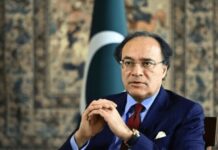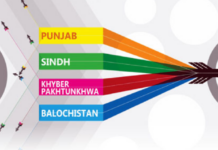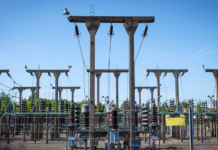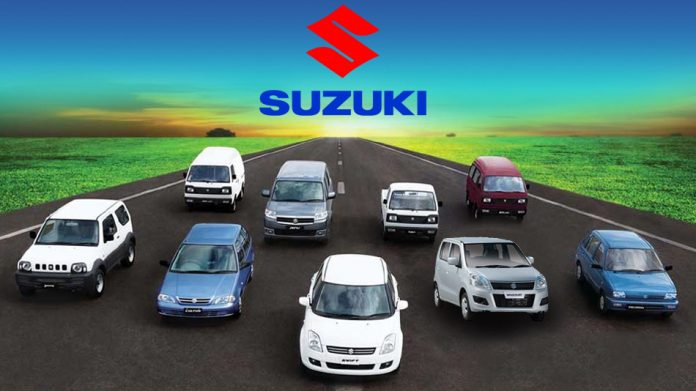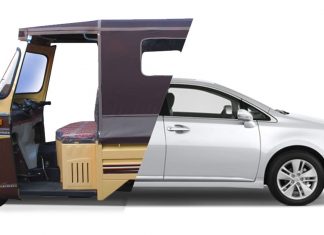Pak Suzuki Motor Company (PSMC) has raised the prices of its entire vehicle lineup. This price hike follows an increase in the sales tax rate from 12.5% to 18% and the introduction of a New Energy Vehicle (NEV) levy, which has significantly impacted vehicle costs.
The revised prices, which came into effect from July 1, 2025, have led to price increases for various Suzuki models, including the Alto, Cultus, Swift, and Ravi.
PSMC issued a circular to dealers, confirming the new prices, with an increase of up to Rs 186,000.
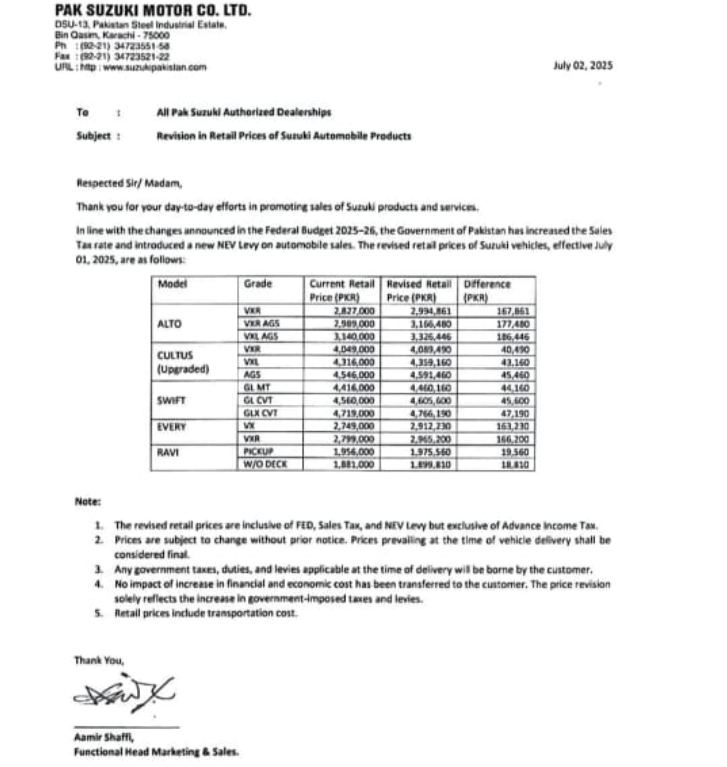
The company attributed these price adjustments to the government’s increased taxes and the imposition of the NEV levy, which have escalated the overall cost of vehicle production and sales.
New Suzuki Car Prices:
| Car Model | Old Price (Rs.) | New Price (Rs.) | Price Increment (Rs.) |
| Alto VXR | 2,827,000 | 2,994,861 | 167,861 |
| Alto VXR AGS | 2,989,000 | 3,166,480 | 177,480 |
| Alto VXL AGS | 3,140,000 | 3,326,446 | 186,446 |
| Cultus VXR | 4,089,000 | 4,089,490 | 40,490 |
| Cultus VXL | 4,316,000 | 4,359,160 | 43,160 |
| Cultus AGS | 4,546,000 | 4,591,460 | 45,460 |
| Swift GL MT | 4,416,000 | 4,460,160 | 44,160 |
| Swift GL CVT | 4,560,000 | 4,605,600 | 45,600 |
| Swift GLX CVT | 4,719,000 | 4,766,190 | 47,190 |
| Every VX | 2,749,000 | 2,912,230 | 163,230 |
| Ravi VXR | 2,799,000 | 2,965,200 | 166,200 |
| Ravi Pickup | 1,956,000 | 1,975,560 | 19,560 |
| Ravi Without Deck | 1,881,000 | 1,899,810 | 18,810 |
The NEV levy, introduced under the Finance Act 2025, applies to all internal combustion engine motor vehicles and motorcycles. It came into effect on July 1, 2025, increasing prices for a broad range of vehicle categories from basic motorcycles to luxury SUVs.
However, the policy exempts new energy vehicles (electric and hybrid cars), vehicles manufactured exclusively for export, and those used by diplomatic missions or international organisations with diplomatic privileges.
On Wednesday, Lucky Motor Corporation (LMC) increased prices of KIA cars, citing the imposition of the NEV Levy in the federal budget 2025-26, continued depreciation of the Pakistani rupee, and rising international freight costs as the primary reasons.





